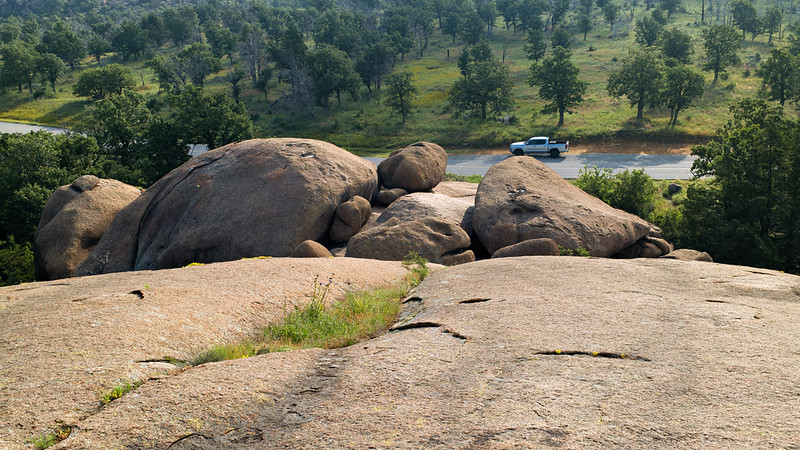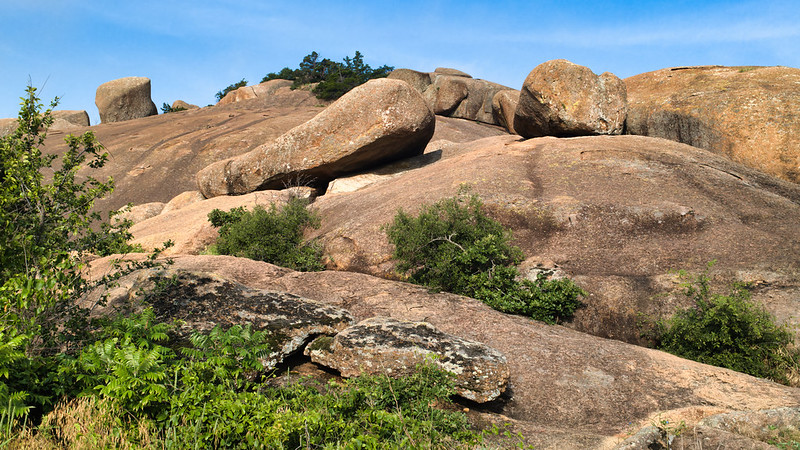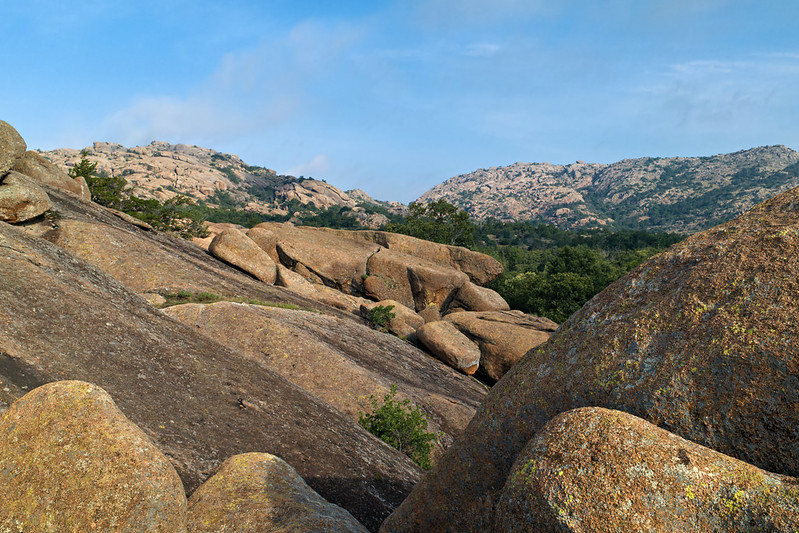The Wichita Mountains Wildlife Refuge in Oklahoma is full of dramatic rock features. I did some digging into the area’s geology before writing this to better understand what I was seeing on the ground. The most eye-catching features are the huge granite boulders scattered across the landscape. You can spot them in many places, but Indiahoma Road offers some of the best close-up views.

According to geological sources, these boulders are part of the Wichita uplift, a chunk of Earth’s crust pushed up and cracked by ancient forces. The granite itself formed about 500 million years ago during the Cambrian Period. It came from magma cooling deep underground, then later surfaced through faulting and erosion.
How Granite Formations Took Shape Over Time
This granite, as I found through research, is part of the Wichita Granite Group. It’s often porphyritic, with large dark crystals of alkali feldspar set in a finer-grained base. Over millions of years, wind and rain wore down the original mountains, leaving behind the rounded boulders and rocky hills we see today.

The Permian Period helped flatten the land, but the granite remained. These boulders are what’s left of a much taller, ancient landscape.
Granite Outcrops as Part of the Refuge Landscape
These boulders aren’t just scenic. They are a major part of the refuge’s geology and character. The refuge, based on U.S. Fish and Wildlife data, covers about 60,000 acres of mixed grass prairie and granite hills. It’s managed for wildlife and conservation, so the land stays much as it’s always been.

If you’re in the area, I also recommend checking out the Holy City in the Wichita Mountains. It’s another fascinating spot not far from these granite features.
Where to See Granite Boulders Up Close
Many folks come to the refuge for wildlife, but the land itself tells a deeper story. These massive granite boulders are part of a landscape shaped by deep time and powerful natural forces. You don’t have to hike far to see them. Just drive slowly, especially along Indiahoma Road, and take it all in.

Very interesting